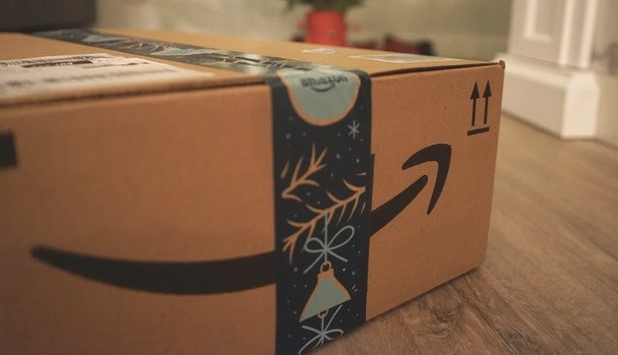Are loyalty programs the way to boost sales? In 2020 sales dipped badly, but they were starting to pick up at the end of the year resulting in optimism about 2021. While the forecast for 2021 is still positive, the economy is going to shrink in this first quarter before rebounding in the spring, according to the Bank of Canada’s January 2021 Monetary Policy Report.
For many business owners, holding on until then is going to be extremely difficult. Business owners may indeed be tempted to rally their regulars – their ‘loyal customers’ as it were – by promoting loyalty programs. There is some merit to this school of thought. However, this is an unsustainable option and the return on investment is low for small and medium sized businesses. What businesses that are struggling need is more customers. What they don’t need is the usual loyal but small group buying (maybe) a little more than usual.
Customer Loyalty in the age of Covid-19
The rules of customer loyalty have not changed in the age of Covid-19. If anything, the pandemic has exposed the myths of customer loyalty.
Customer loyalty programs are promoted to entice customers to a business and to encourage them to stay. Unfortunately, loyalty programs don’t bring in new business, nor do they play any significant role in building customer loyalty. The type of customer loyalty programs that do work are ones that offer benefits that are not available to non-member customers and cannot be bought. The problem is that small and medium sized business are rarely able to afford such loyalty programs. Even if they could afford the investment, focusing on increasing customer loyalty is a high-risk strategy with low rewards.
Customer loyalty program myths make them popular
There are certain myths surrounding why businesses should have a customer loyalty program. These myths have been around for decades, and the research that disproves their usefulness has also been around for ten years. And yet, these beliefs, based on outdated information, are the reasons why businesses often start customer loyalty programs and focus on getting more loyal customers to increase sales. Consider the following four myths:
- Loyalty programs lead to an increase of purchases and customer retention. Big brands such as Sephora and Amazon have had success with loyalty programs. However, it must be remembered that their programs are designed customer experience and not retention. The bottom line is that a customer who likes the brand and product will buy even if there is no loyalty program. These are ‘heavy buyers’, people who buy more than the average consumer, and are mistakenly labelled ‘loyal’. If they found the same or similar products/services elsewhere, they would shop there if was convenient for them.

As far as retention of customers goes, this is generally harder for small brands because they don’t have the resources of bigger brands. They also have fewer locations. For example, loyal customers of an independent coffee shop will buy their coffee when they’re in the area. If they are not, they will happily buy their coffee elsewhere.
- The 80/20 Rule. According to this old (and incorrect) rule, 20% of customers are responsible for 80% of sales. This is false. The 20% of customers who buy more frequently than the average customer don’t actually account for a large percentage of the sales. Focusing on the 20% and catering to them and building up loyalty through a loyalty program won’t increase how much or how often they buy. Instead, businesses should be looking at the other 80% and trying to bring them back, as well as reaching out to more potential customers.
- It’s easier and cheaper to retain customers than it is to attract new customers. It costs 5 times more to acquire a new customer than to retain an existing customer. This is easily explained: existing customers like the product/service and are familiar with the brand. The probability of selling to existing customers is 60-70% and they are 50% more likely to buy a new product. Non-customers are harder to convince; the probability of them buying is 5-20%. It’s worth remembering though that existing customers will only purchase so much. It’s important to reach out to and convert new customers.
- Loyal customers promote the business. Instead of ‘loyal customers’, let’s call them ‘heavy buyers’ as they buy more often than other customers. They clearly like the brand, so they’re likely to speak well of the product/service. However, as we’ve established, these heavy buyers only make up a small percentage of all customers. So, any word of mouth marketing from this small group wouldn’t create the kind of buzz needed for there to be any real impact on sales. What does create a buzz is any people talking about a brand, but that only happens if many people know about it.
Loyalty programs that work

Loyalty programs need to tempt customers by offering things that they wouldn’t otherwise have access to, as Amazon Prime has so spectacularly done. Jeff Bezos, CEO of Amazon, added over $70 billion to his net worth in 2020 as a direct result of the pandemic. This is despite constant news coverage about Amazon workers’ abysmal conditions, firings and more. Why? It’s not because people don’t care. It’s because it’s easier to order products on Amazon than it is to order from smaller businesses. For one thing, you can buy different things in one go and can compare items through reviews – all on one website. For another, smaller businesses use the postal service, which takes longer to deliver and is more expensive. Convenience and instant gratification trumps ‘loyalty’.
Amazon Prime offers more than next day delivery to its Prime members. A membership not only gets the shopper fast delivery, it also provides access to thousands of eBooks, secure unlimited photo storage, early access to deals and the ability to stream thousands of movies, TV shows and music.
As a business owner, if you still think that your business will benefit from a loyalty program, ask yourself the following questions:
- What incentives and benefits am I providing through my loyalty program that would make them purchase more than they already do?
- Are the benefits offered through the program exclusive, i.e. unavailable to non-members?
- Would the membership benefits entice customers who aren’t heavy buyers, but are light buyers, to become members?
- Do I have a plan to get these light buyer members to buy more?
Rather than spending resources on a loyalty or retention program, SMEs should focus on attracting more customers. If you have a loyalty program already in place which isn’t boosting sales, take some time to consider whether the premise of the program was developed around one of the myths above. If it was, you need to make some changes and start on a market penetration strategy.
